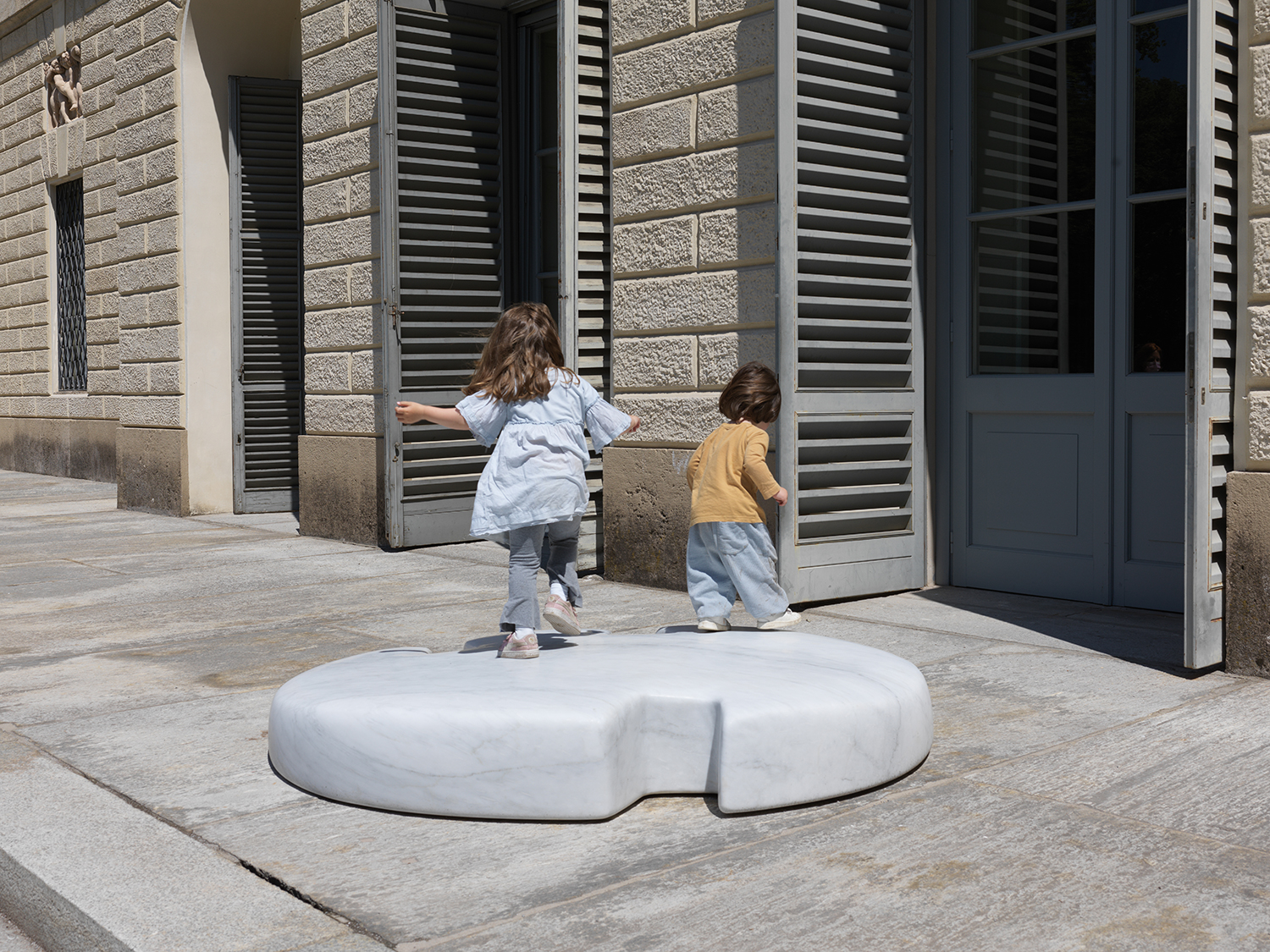Art is about more than itself, says the artist; you can just about see her sculptures agreeing
Nairy Baghramian is a kind of surgeon. With exacting precision she peels away the layered contingencies of art and stitches them back together in sculptures that resemble human viscera or appendages. Like our organs, their soft organic forms depend on hard skeletons for support. Leaning on metal frames, gallery walls or doorways, each seemingly precarious construction is a synecdoche for the shaky systems that undergird our perceptions of art: the intentions of artists, the discourse of critics and curators, the architecture of museums and the experiences of viewers. Baghramian’s unruly works are often positioned at defiant odds with the spaces in which they are displayed, as if to suggest that all subjects, no matter how alienated, have power within the institutions they occupy.
For her contribution to the 2008 Berlin Biennale, for example, Baghramian installed La Colonne Cassée, 1871 (The Broken Column, 1871) on both sides of the Neue Nationalgalerie’s pristine glass facade. Mies van der Rohe’s monumental rendition of a Doric temple was punctured by a bent pillar, as if to mock the failed ambitions of ‘straight’ modernism. “Modernity is heterosexual,” she tells me. As for the claims to openness modern architects like Mies van der Rohe made with their frequent use of glass, she adds, their “assumption of transparency is really one-sided”. In the light of day, it’s easy to see out of the Neue Nationalgalerie’s windows but much more difficult to peer in. Baghramian’s Peeper (2016) takes this even further, cutting off a section of an open gallery with a taut steel cable. The work’s title flips the script on the viewer, playfully accusing them of a voyeuristic intrusion.

The problem of access is central to Misfits, a series of abstract sculptures that Baghramian displayed at Milan’s Galleria d’Arte Moderna in 2021. Smoothly sanded, pale pink and green marble lozenges were installed on the museum terrace, adjoining a park whose use is restricted to children and their families. The sculptures’ distended aluminium counterparts, meanwhile, surveyed through the gallery’s windows a playground they could not visit, like childless adults who had outgrown the sandbox. Baghramian was shocked that public space should forbid those unable or unwilling to procreate, a condition of legally enforced heteronormativity. “There’s queerness in my work that people don’t want to acknowledge,” she says. With cheery coats of blue and orange paint, her excluded Misfits seem much happier on their own.
Baghramian was born in Isfahan, Iran, in 1971. When she was thirteen her family relocated to Berlin, where she has lived and worked ever since. As a teenager she began attending performances at Berlin’s Volksbühne, including plays by Bertolt Brecht. The verfremdungseffekt or ‘making strange’ for which Brecht is best known is also present in Baghramian’s sculptures: positioned at thresholds or in corners, they focus our attention on the spatial and cultural context of their display the same way that Brecht’s actors, by breaking the fourth wall, foreground the structural devices of theatre. An awareness of the way bodies perform in the world is also fundamental to queer modes of being. Baghramian is drawn to the ephemerality of performance, which encourages critical reflection: “When we turn our back on the stage, we begin thinking,” she says. Like walking out of a theatre, turning away from a sculpture is an expression of agency. Baghramian welcomes that moment, for it indicates that neither the viewer nor the artwork is ever neutral.
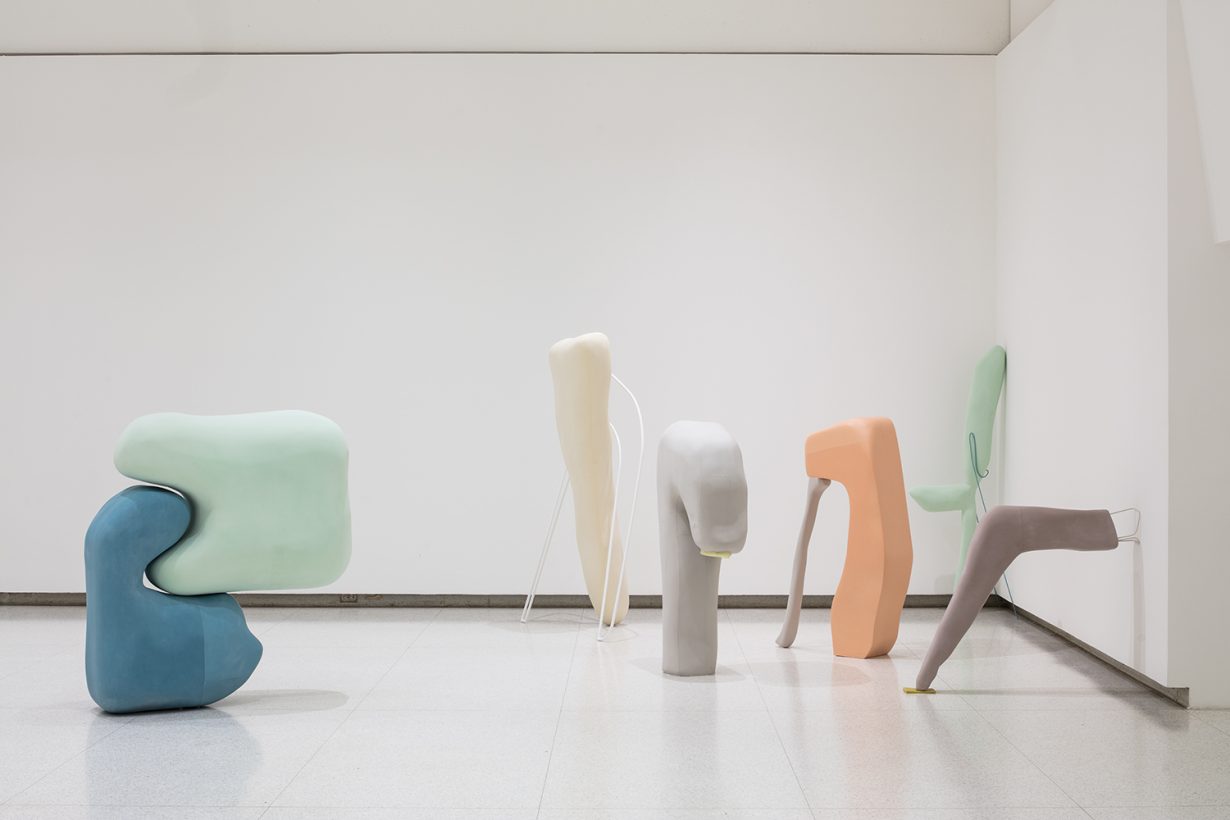
In a 2012 talk at New York’s Vera List Center, Baghramian decried what she called the increasingly common perception of artworks as “autonomous entities” that can be considered apart from the context of their production and display. “I believe this work-turned-subject is a kind of monster,” she said. “Curators, art historians and critics sometimes nurse this monster by talking about the work as an isolated entity, thus effectively releasing artists from their responsibility to contribute to current discourse.” Art must be about something more than just itself. For Baghramian, hermeticism is a horror. “In its encounter with the beholder,” she continued, “the work of art exercises an indirect influence on cultural habits, drawing our attention by contradicting or rejecting them, and thus providing a frame for the transformative power of aesthetics and politics.”
Her sculptures therefore often assume forms that we take for granted, yet upon which we lean. Her 2008 exhibition The Walker’s Day Off, at Staatlichen Kunsthalle Baden-Baden, featured slender rods of painted steel and rubber resembling walking sticks enlarged to useless scale. Like the carved supports of classical marbles, they seemed at once a homage to the physics of sculpture and a colonnade of amputations. Meanwhile, Fluffing the Pillows, Baghramian’s 2012 Hector Art Prize exhibition at Kunsthalle Mannheim, included yellow aluminium hooks mounted to the walls that she called Moorings and metal poles or Gurneys. Redolent of rigging devices on commercial fishing boats, they propped up stuffed burlap sacks that sat flaccidly on the floor. The exhibition’s title referred to a domestic chore that is equally sculptural and superfluous. Baghramian’s supports may not always be structurally necessary, but their intimation of balance makes us consider the firmness of our own footing.
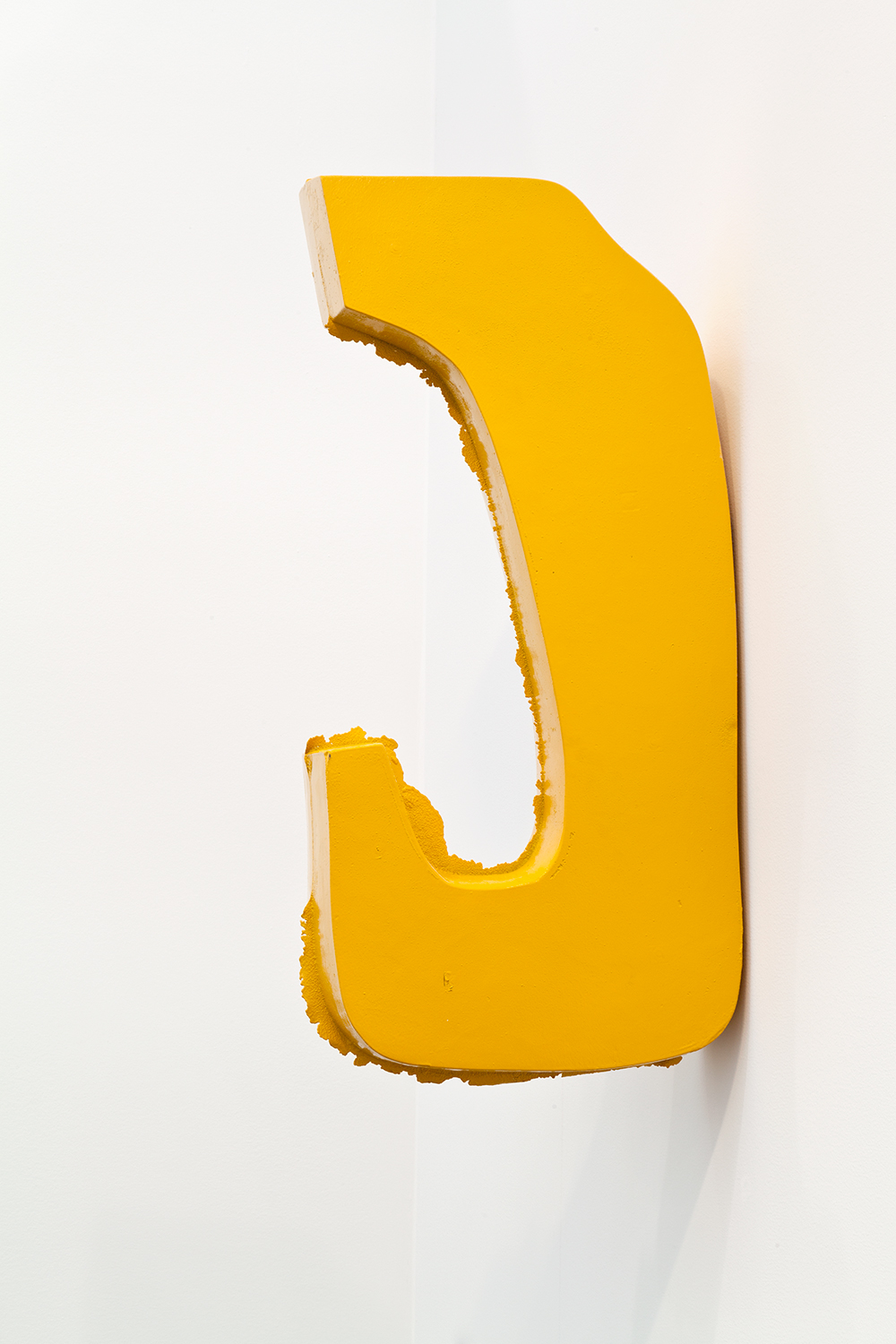
At the centre of Formage de tête, her 2011 Venice Biennale presentation, a slab of soft, moulded silicon atop a steel platform, like a tablecloth or cut of meat, acquired its potency only when splayed out against the hard, flat surface. The work’s title, French for ‘shaping the head’, puns on a type of terrine, perhaps a nod to a sculptor’s labour for public consumption. Sculptures resembling kitchen implements (Rechauds and Capots) and photographs of a figure in a chef’s jacket invoked the labour of the garde-manger or cold-food gourmet as a possible metaphor for the act of cooking up an exhibition.
For Baghramian, institutional support is not simply about the architecture of museums but also crucially about the people who work in them. In its title, The Walker’s Day Off invoked the image of a male escort, hired to accompany a rich client to social functions, and for her 2017 survey at the Walker Art Center, in Minneapolis, Baghramian asked gallery attendants to wear T-shirts printed with a photograph of a hustler. The move highlighted the essential yet overlooked labour of staff who guide visitors around museum spaces. Their presence in the galleries, meanwhile, subverted the original show title, prompting the question as to when, if ever, they might enjoy paid leave.
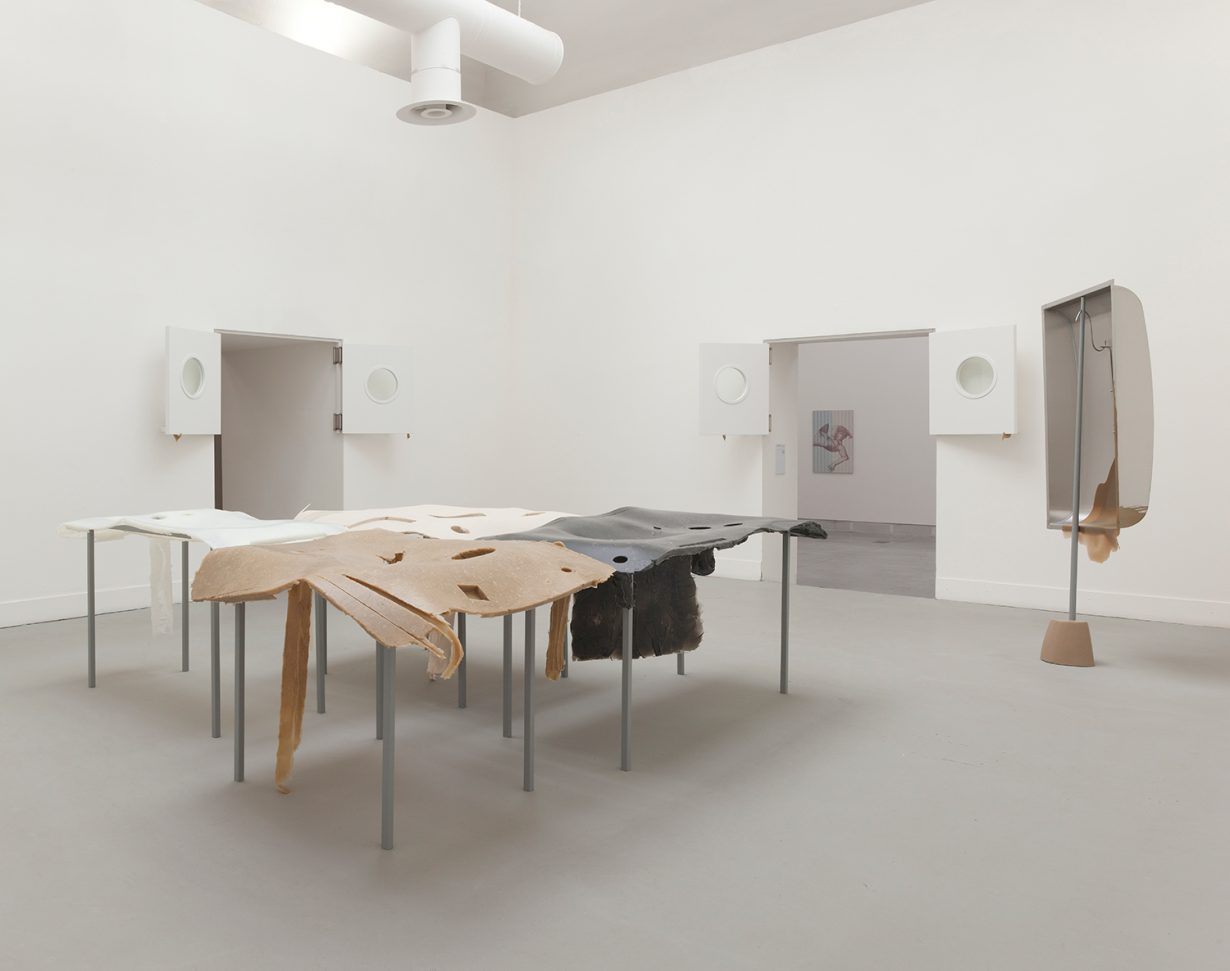
Baghramian has also turned to our own biological support structures. The lacquered bronze ridges of Privileged Points (2017), bracketed by steel plates, resemble model vertebrae in a teaching lab. Retainer (2013), a circular arrangement of thin, irregular silicon shapes on polycarbonate stands, glow pale and fleshy in the light like magnified skin grafts. The monumental French Curve (2014), meanwhile, has a gouged, Pepto Bismol-pink underside like a set of gums. Then there are the Big Valves (2016), comprising glass panes attached to painted polyurethane armatures; when installed in doorways, they channel viewers’ movements like police shields, perhaps referring to visitors as the ‘blood’ of institutional (and sometimes authoritarian) circulation.
Other works, such as Chin-Up and Scruff of the Neck (both 2016), resemble medical prostheses or dental tools – mechanisms that both constrain and augment the human body, sculpting it into a new bionic form. (This is also a queer vision of how humans can transcend their biological limitations.) Their enhancements also indicate potential deficiencies in the institutions upon whose walls they are mounted. As Vincenzo de Bellis and Martin Germann, curators of Baghramian’s 2016 Walker survey, acknowledge in the exhibition’s catalogue, ‘Scruff of the Neck supported the museum’s architecture in an ironically suitable fashion, since museums are not infrequently regarded as being essentially toothless mouths’.
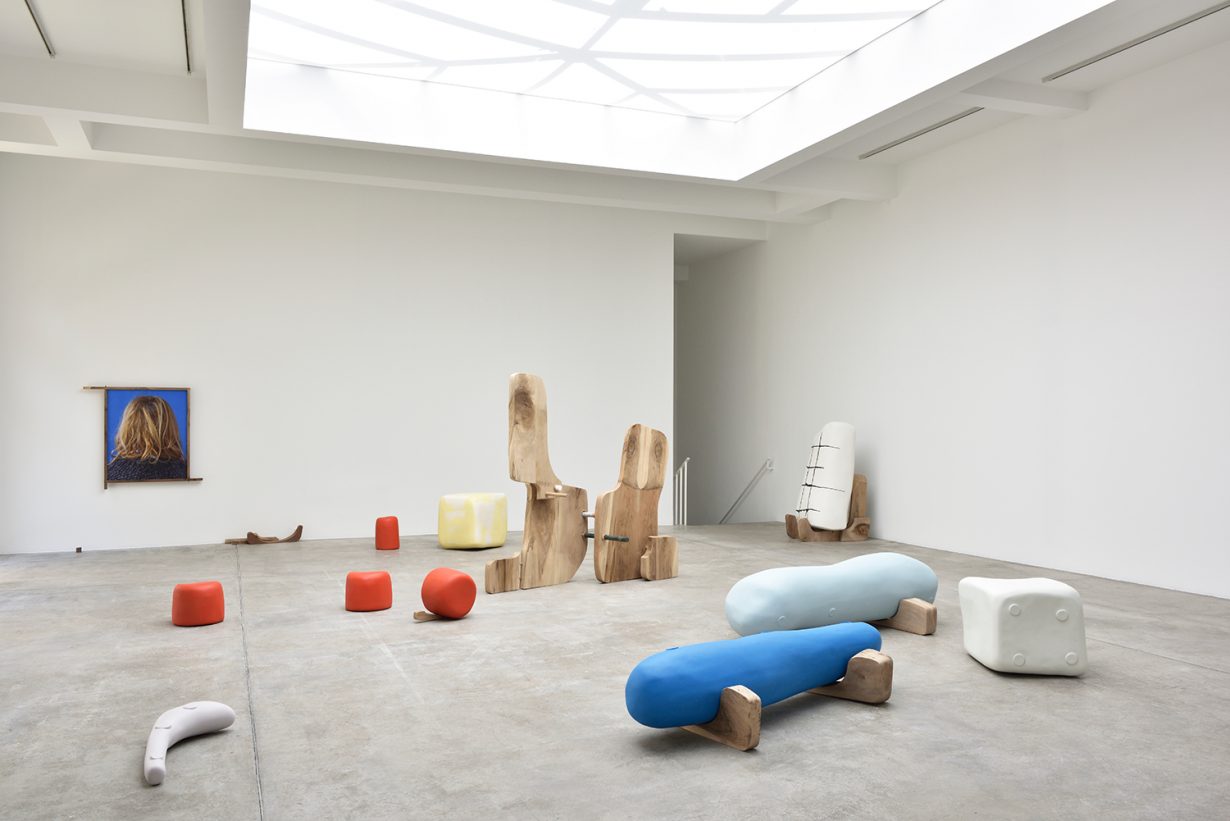
Dentures and bones, gums and gristle: when evoking these body parts, Baghramian’s dissections of the medium of sculpture and the institutions in which it is exhibited take on an especially surgical quality. Yet rather than cobble together a Frankenstein’s monster – her reviled ‘autonomous work of art’ – she sculpts their forms to more natural, and thus contingent, dimensions. Combinations of contrasting materials – cheap and expensive, glossy and matt, hard and soft, voguish and déclassé – could either be unstable or symbiotic, depending on their equilibrium within the context of display. Many of them refuse to fully adapt. ‘[The body] cannot be isolated from the context in which it moves and through which it is being shaped,’ Baghramian said recently. Neither can her sculptures, which although not living, are shaped by life.
Nairy Baghramian is the winner of the 2022 Nasher Prize; work from her Misfits series is on view at the Nasher Sculpture Center, Dallas, through 1 May
Evan Moffitt is a writer, editor and critic based in New York, and is the creator of the new podcast Precious Cargo
